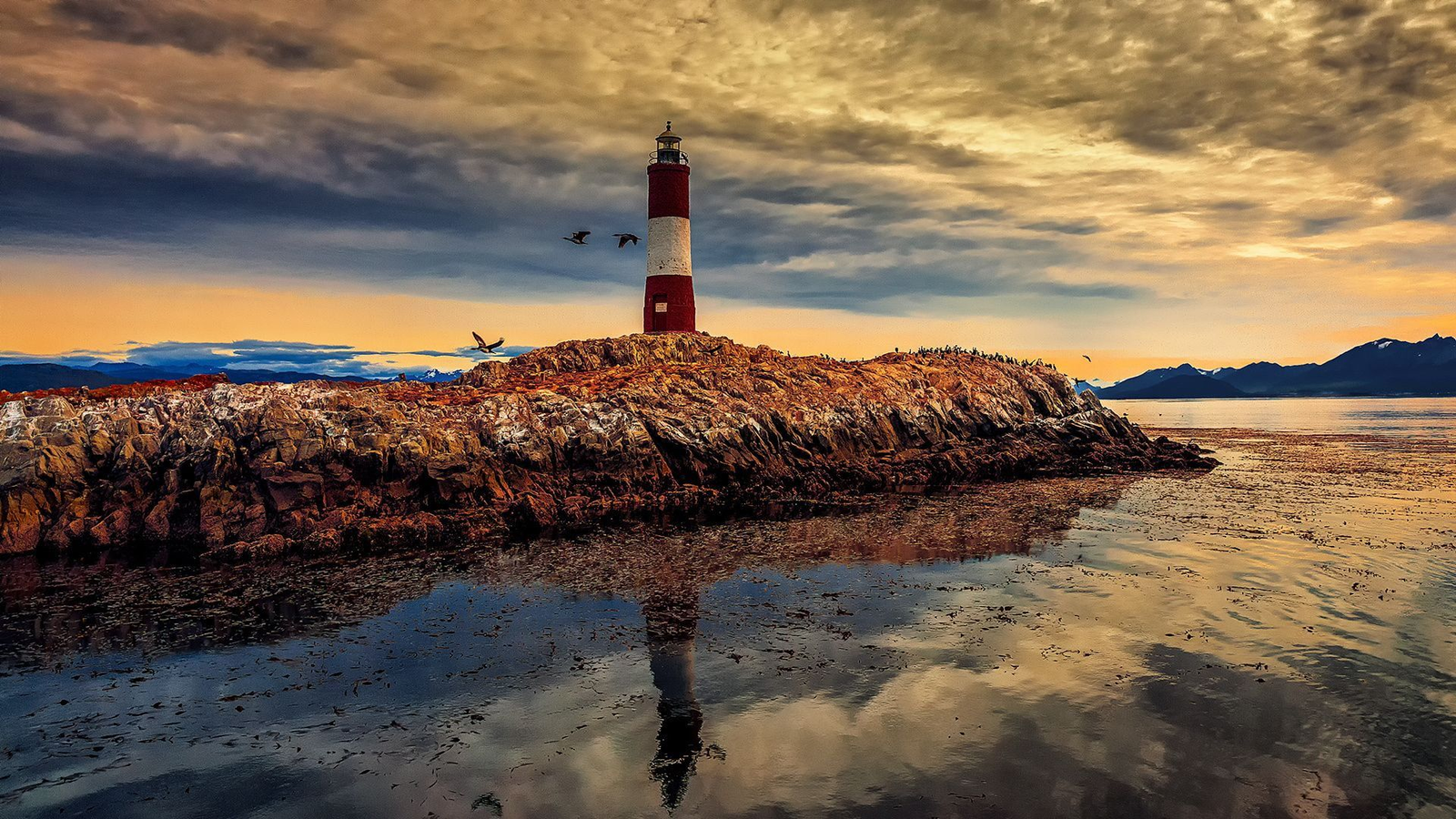How Sustainable Architecture is Redefining Luxury in Patagonia
In the realm of luxury travel, the definition of opulence is evolving. No longer confined to lavish interiors and premium amenities, true luxury now encompasses a deeper connection with the environment and a commitment to sustainability. Nowhere is this transformation more evident than in Patagonia, a region renowned for its untamed natural beauty. Here, sustainable architecture has emerged as a key factor in shaping the future of luxury accommodations. By blending eco-conscious design with modern comforts, Patagonia’s finest properties offer discerning travelers an experience that harmonizes with the landscape, all while treading lightly on the planet.

At Patagon Mountain Agency, we curate journeys that allow guests to explore Patagonia’s pristine wilderness without compromising on luxury. This balance is achieved through properties that are not only architecturally stunning but also designed to respect and preserve the region’s fragile ecosystems. Below, we explore how sustainable architecture is redefining what it means to experience luxury in Patagonia.
1. The Intersection of Luxury and Sustainability
Luxury has traditionally been associated with indulgence—extravagant designs, cutting-edge technology, and opulent materials. However, as travelers become more environmentally conscious, the demand for eco-friendly luxury has grown. In Patagonia, this shift is particularly poignant, as the region’s dramatic landscapes demand a careful approach to development.
Eco-Conscious Design
Sustainable architecture in Patagonia prioritizes the integration of buildings with their natural surroundings. By utilizing locally sourced materials, passive heating and cooling systems, and renewable energy sources, architects are creating structures that minimize environmental impact. Luxury lodges and resorts in Patagonia are increasingly embracing designs that reduce energy consumption and waste while maintaining a high standard of comfort and style.
Aesthetic and Environmental Harmony
The beauty of Patagonia lies in its rugged, untouched wilderness. Luxury properties that prioritize sustainable architecture ensure that their presence does not detract from this beauty. Instead, they blend seamlessly with the landscape, using natural materials like wood, stone, and glass to create a sense of harmony between the built environment and the surrounding nature. This approach not only enhances the aesthetic appeal of the property but also minimizes its ecological footprint.
2. Examples of Sustainable Luxury in Patagonia
Several luxury properties in Patagonia have embraced the principles of sustainable architecture, setting new standards for eco-conscious travel. These properties are not only luxurious but also serve as models for how sustainable practices can be integrated into high-end tourism.
Tierra Patagonia Hotel & Spa
Nestled on the edge of Torres del Paine National Park, Tierra Patagonia is a prime example of how sustainable architecture can enhance the luxury experience. The hotel’s design prioritizes sustainability, using locally sourced materials to reduce the environmental impact of construction. The building’s curved wooden structure blends into the landscape, and large windows offer panoramic views of the surrounding mountains, creating a seamless connection between the indoors and outdoors.
In terms of energy efficiency, Tierra Patagonia uses a combination of solar panels and a geothermal heating system, reducing reliance on non-renewable energy sources. The property also implements water conservation measures and waste reduction programs, making it one of the most environmentally friendly luxury hotels in the region.
Awasi Patagonia
Awasi Patagonia is another example of sustainable luxury in the region. Located in a private reserve near Torres del Paine, this exclusive property consists of individual villas that are designed to blend into the natural landscape. Each villa is constructed from local wood and stone, with a focus on minimizing the visual and environmental impact on the surrounding wilderness.
Awasi’s commitment to sustainability extends beyond its architecture. The property operates with a minimal footprint, using renewable energy and implementing conservation programs to protect the local flora and fauna. Guests can enjoy the luxury of private villas with spectacular views while knowing that their stay contributes to the preservation of Patagonia’s pristine environment.
3. Innovative Sustainable Practices in Patagonian Architecture
Sustainable architecture in Patagonia goes beyond aesthetics and energy efficiency. Many luxury properties are incorporating innovative practices that not only reduce their environmental impact but also enhance the guest experience. These practices are redefining what it means to offer a luxury stay in one of the world’s most remote and beautiful regions.
Passive Solar Design
One of the most effective ways to reduce energy consumption is through passive solar design, which harnesses the sun’s energy to heat buildings naturally. In Patagonia, where temperatures can fluctuate dramatically, passive solar design is an essential component of sustainable architecture. By orienting buildings to maximize sunlight exposure and using materials that store heat, luxury lodges can maintain comfortable temperatures without relying on fossil fuels.
Green Roofs and Living Walls
Some of Patagonia’s most forward-thinking properties are incorporating green roofs and living walls into their designs. These features not only provide insulation, reducing the need for artificial heating and cooling, but also help to absorb rainwater, reducing runoff and erosion. Green roofs and living walls also create habitats for local wildlife, further enhancing the property’s connection to its natural surroundings.
Water Conservation Systems
Water conservation is a critical issue in Patagonia, where resources are limited and the environment is fragile. Many luxury properties in the region are implementing systems that reduce water consumption and recycle greywater for irrigation. By using low-flow fixtures, rainwater harvesting systems, and eco-friendly wastewater treatment methods, these properties ensure that they leave as little impact on the local water supply as possible.
4. The Benefits of Sustainable Luxury for Travelers
For luxury travelers, the appeal of sustainable architecture goes beyond environmental responsibility. Sustainable properties in Patagonia offer a unique and enriching experience that connects guests with the region’s natural beauty and cultural heritage. By staying in a property that is designed with sustainability in mind, guests can enjoy a sense of place and purpose that is often lacking in more conventional luxury accommodations.
Immersion in Nature
One of the most significant benefits of sustainable architecture is the way it allows guests to immerse themselves in nature. Properties that prioritize sustainability often feature open, unobstructed views of the surrounding landscape, creating a sense of connection with the natural world. Whether you’re waking up to the sight of the Andes Mountains or watching the sunset over a glacial lake, the experience is enhanced by the knowledge that your stay is having a minimal impact on the environment.
Cultural and Environmental Education
Many sustainable luxury properties in Patagonia also offer educational opportunities for guests. Whether it’s learning about the local flora and fauna, understanding the principles of sustainable architecture, or participating in conservation efforts, these properties provide a deeper level of engagement with the region. This not only enriches the travel experience but also fosters a greater appreciation for the importance of preserving Patagonia’s natural and cultural heritage.
5. Sustainability as the New Standard of Luxury
As travelers increasingly prioritize sustainability, luxury properties around the world are recognizing that environmental responsibility is no longer optional—it’s essential. In Patagonia, where the landscape is as fragile as it is beautiful, sustainable architecture is redefining the concept of luxury. The region’s finest lodges and resorts are proving that it’s possible to offer world-class accommodations while minimizing environmental impact.
At Patagon Mountain Agency, we understand that true luxury is about more than just comfort and exclusivity—it’s about creating experiences that are meaningful, responsible, and connected to the natural world. That’s why we partner with properties that share our commitment to sustainability, ensuring that your Patagonian adventure is as eco-friendly as it is unforgettable.
Conclusion: Experience the Future of Luxury in Patagonia
Sustainable architecture is shaping the future of luxury travel in Patagonia, offering a new standard of opulence that is defined by environmental responsibility and a deep connection to the natural world. By choosing to stay in one of the region’s eco-friendly luxury properties, you can enjoy the best of both worlds: the comfort and exclusivity of a high-end stay, combined with the peace of mind that comes from knowing your trip is contributing to the preservation of Patagonia’s unique landscapes. Contact Patagon Mountain Agency today to learn more about our sustainable luxury offerings and start planning your eco-friendly Patagonian adventure.



